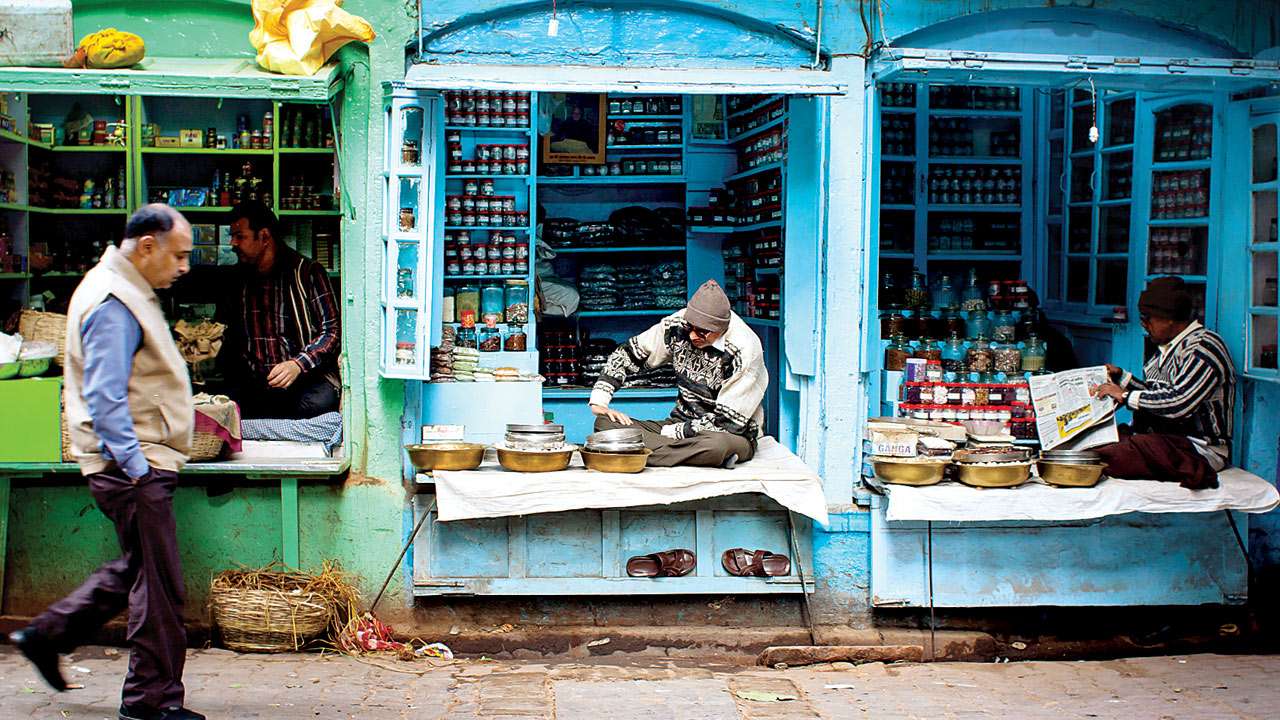
Professional or residential localities in old cities, and this is true of most old cities at least in South Asia and I dare say in other parts of the world, were known for the dominant craft or professions followed by people who lived in or worked out of those areas.
Let us take London, for instance. There was the Savile Row for tailors, the Fleet Street for newspaper offices and Harley Street for doctors. Paris was no different; furniture makers, cutlery makers, glass makers, metal-workers, dyers, porcelain makers, makers of painted wallpaper, candles and block printers, each lived and worked in a separate part of the city.
It was the same in Delhi and other medieval cities in South Asia. And that is how Delhi, that is Shahjahanabad, got the names for most of its localities. Churiwalan — the street of the bangle makers, Suiwalan the street of the embroiderers, Sirkiwalan — the locality of the thatch makers, Gadhewalan — the street of those who kept donkeys for shifting stuff in the narrow streets of the city, Ballimaran — the locality of those who ferried people across the Yamuna, Chhipiwada — the street of the block printers, Gali Lohe Wali — the Iron merchants street, Gali Boriye Wali — the street of the gunny sack traders, Phatak Teliyan — the street of the oil pressers, Charkhe Walan — the street of the workers of the spinning wheel, Pai Walan — the street of the bed-post makers, Gali Sang Tarashan — stonesmiths’ street, Gali Naal Bandaan (the horseshoe fixer’s street), Kucha Mahajani — the merchants’ street, so on and so forth. Mehrauli, the site of the first of the seven capitals that came up in the area and the first city of Delhi, has similar names for localities like Gali Doodh Wali – the milk-sellers’ street and Gali Lohe Wali – the iron merchants’ street, to name two, localities.
Aside from this trend, there were a few other categories that were in use in South Asia, perhaps more in India than elsewhere, but we have not studied this at any great length and it is possible that this, too, is a fairly widespread trend. We talk here about streets and localities that were named after trees or geographical features, etc.
Some examples that can be cited from Shahjahanabad would include, Gali Peepal Wali — the Peepal (ficus religiosa) , Gali Neem (melia indica), Pahadi Imli (tamarindus indica), Gali Jaman Wali (syzygium cumini) Gali Kubda Peepal - the street of the crooked peepal, Darya Ganj, Gali Piao Wali (the water kiosk street) and Neher Wali Haveli, etc.
Given the fact that we are a society driven by caste and community consciousness, there were names of localities that reflected this reality as well and Punjabi Phatak (the gate of the Punjabis) Gali Kayasthan ( the street of the Kayasths) Marwari Katra — the locality of the Marwaris, Kashmiri Katra — the locality of the Kashmiris, Gali Kashmiriyan the Kashmiris’ street, etc.
Amidst all this, there were a few areas that were named after individuals, but these were people who were really outstanding personalities of the city, people who everyone in the city knew, and so you had Bazar Sitaram and Sadak Prem Narayan, named after two illustrious Kashmiri Pandits, whose families had perhaps shifted to Shahjahanabad from Agra or from Kashmir, when the capital shifted to Delhi from Agra in 1648. There was Kucha Ustad Daagh, named after one of the most popular poets of his time, Gali Aulia Dai — the most skilled midwife of her time, Gali Tanras Khan — named after the court Musician of Bahadur Shah Zafar and a dozen of the Dilli Gharana of Music. Gali Hakim Momin — named after Momin Khan Momin, a great poet and a contemporary of Ghalib.
The processes through which streets, bazars, localities acquired their names, lent a character to the city, they informed the visitors of the diversity of people, professions and ethnicity of those who inhabited the city. These names gave character to the city and were records of its history.
Somehow we have lost this sense of how to name places. All we have now are names commemorating those who subscribe to a specific political ideology, to be forgotten the moment antagonists of the earlier rulers come to exercise political power, bringing with them another set of ‘notables’, who subscribed to the ideology of the incumbents.
And so we have a situation that we do not have a street or a locality in Delhi named after Kalidas, Charak, Sushrut, Kabir, Meer, Ghalib, Premchand, J C Bose, Bade Ghulam Ali Khan, Hira Bai Badodekar, Gangubai Hangal, Ramanujan, Bhabha or Satyajit Ray. It is really tragic to see that all we commemorate in the cities that have been in existence for hundreds of years are partisan memorials to political figures without any acknowledgement of the colossal contribution of the scientists and cultural icons who have made us into who we are.
The author is a historian